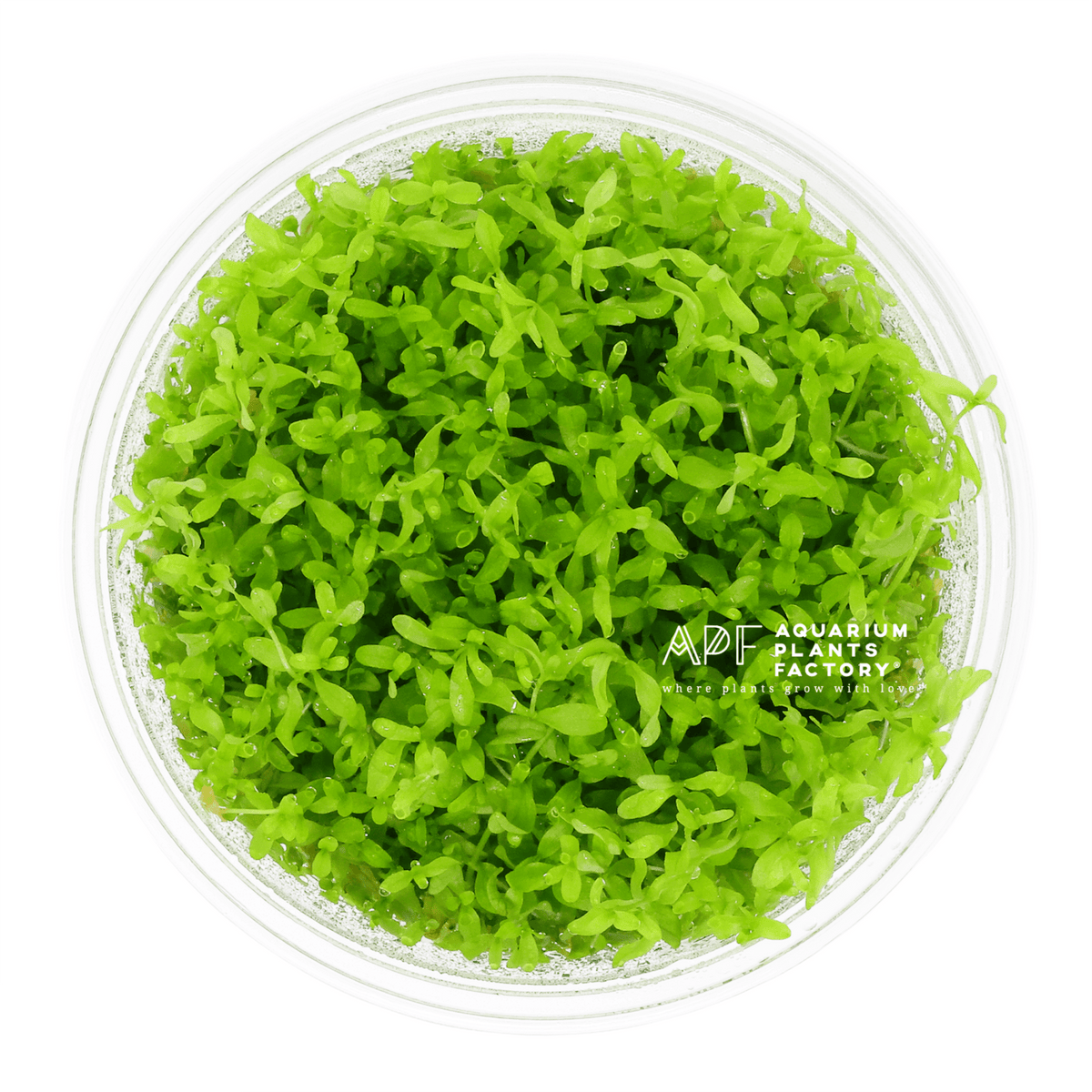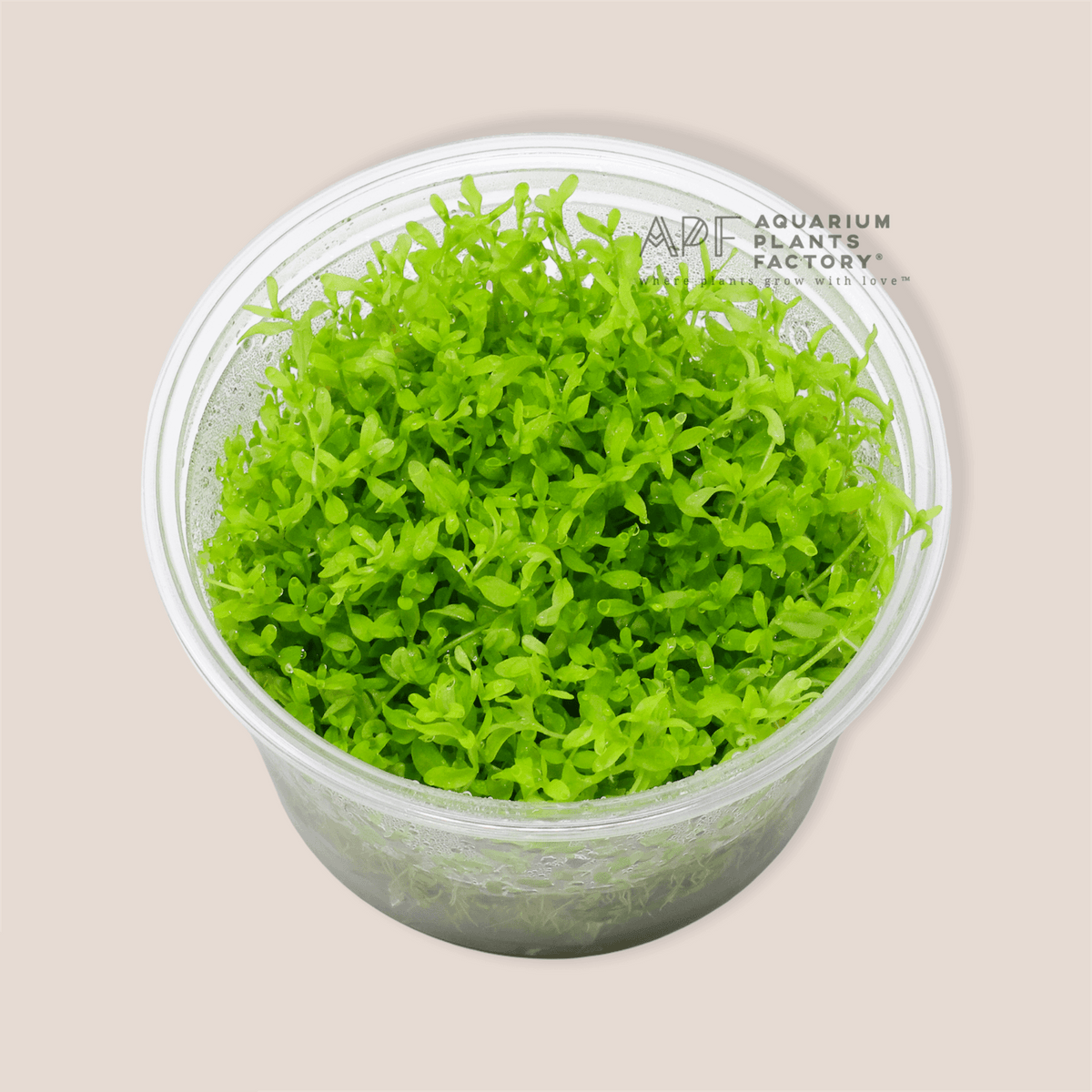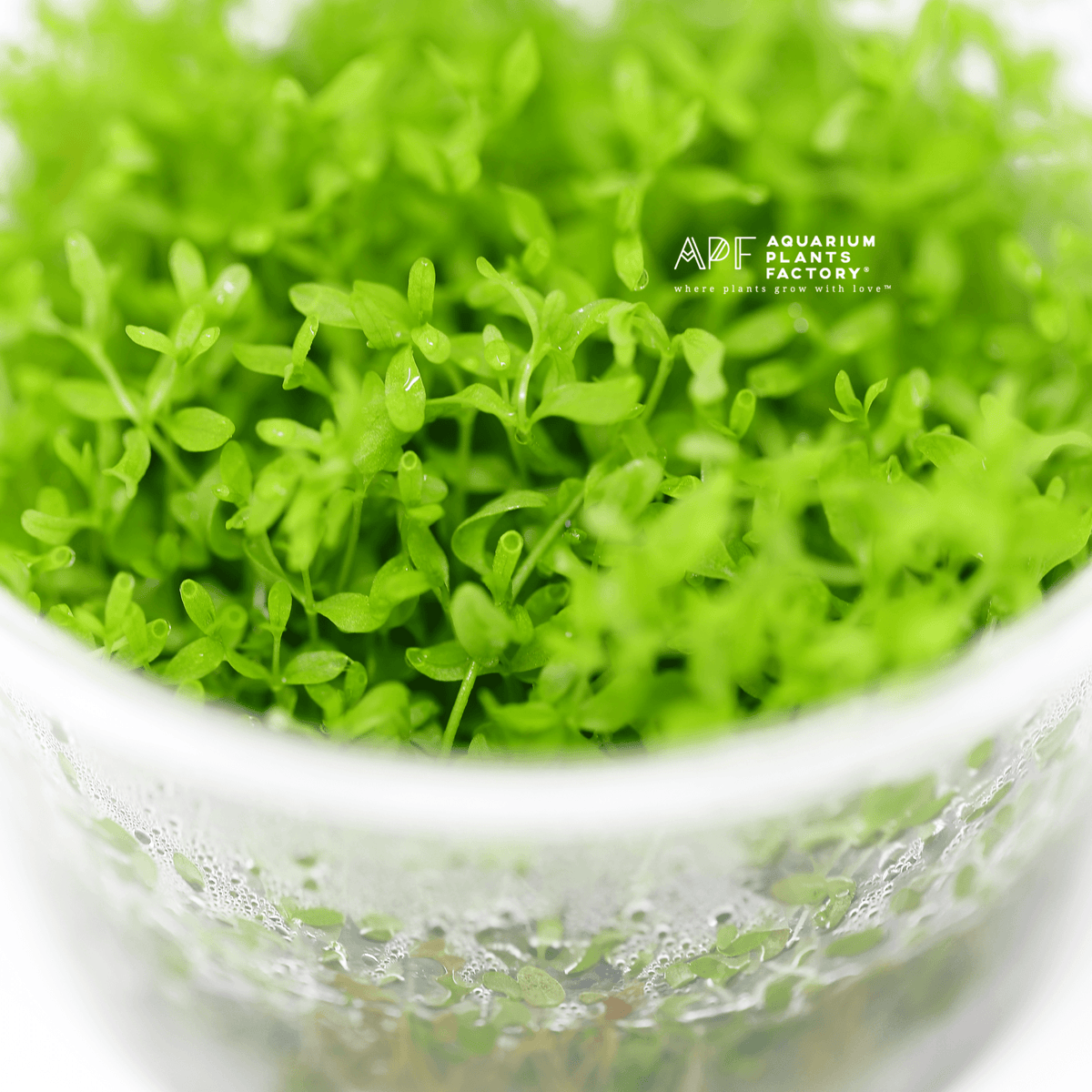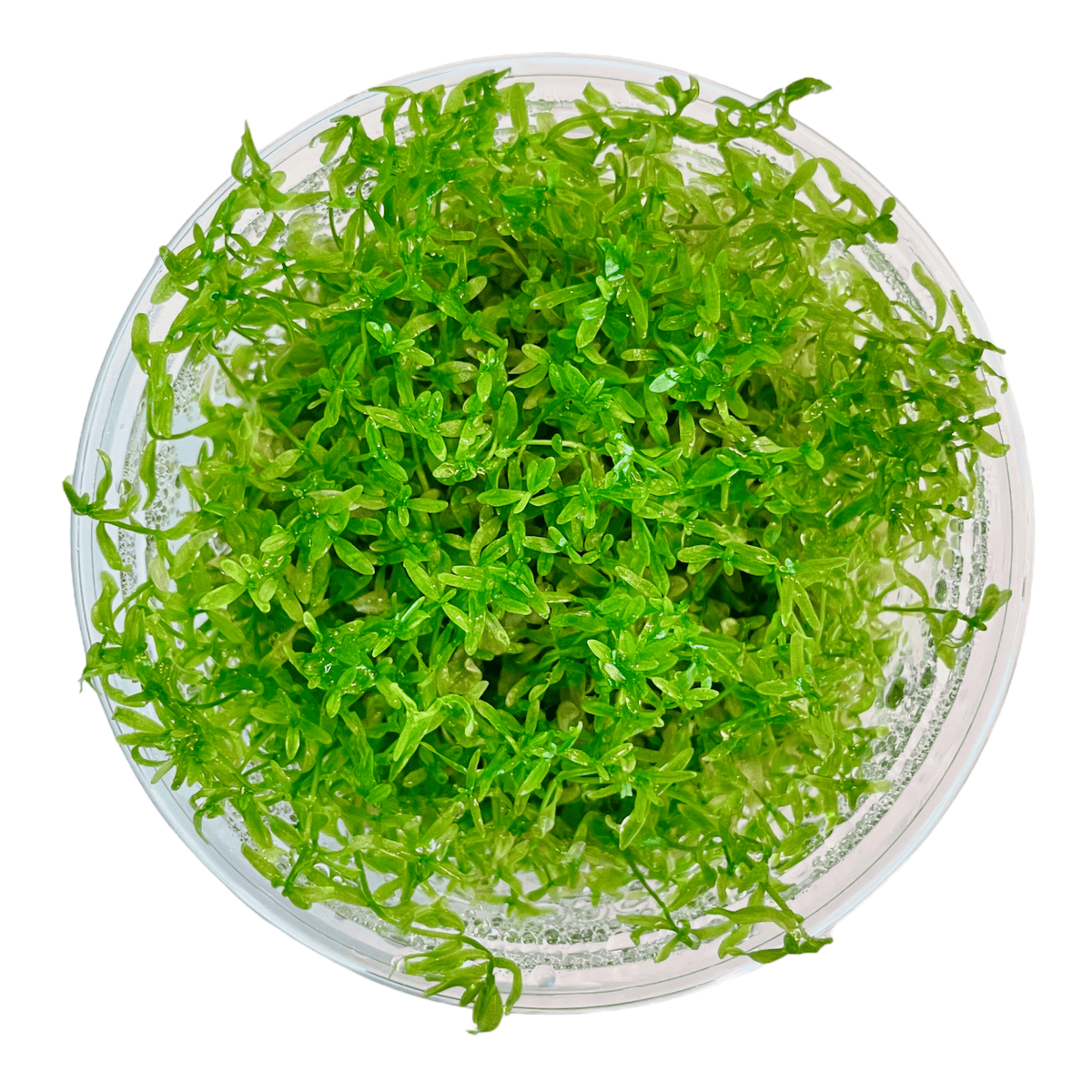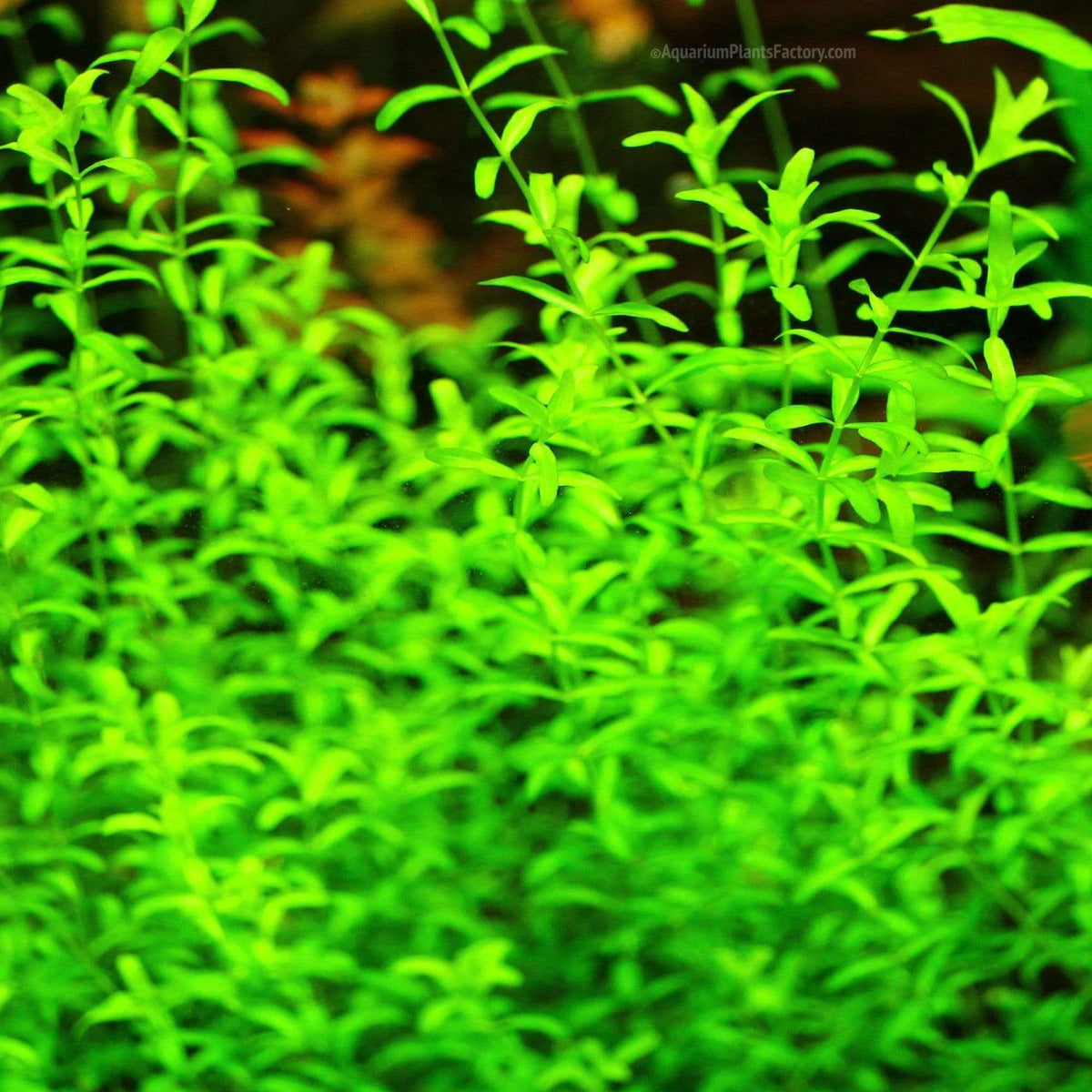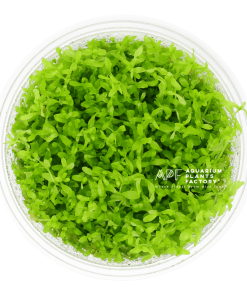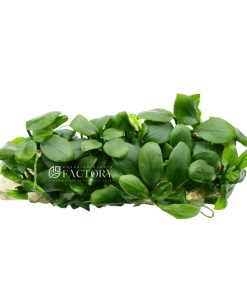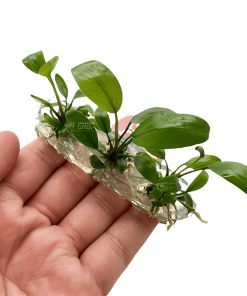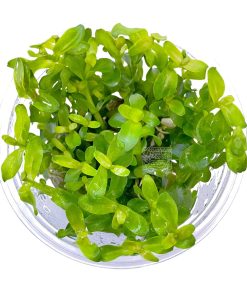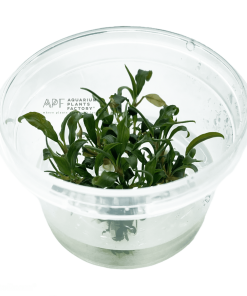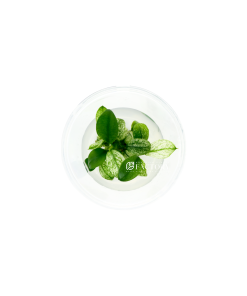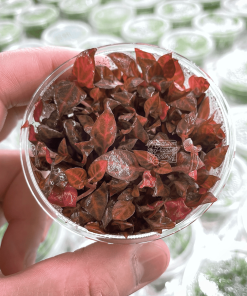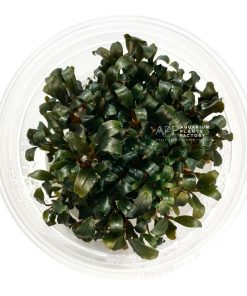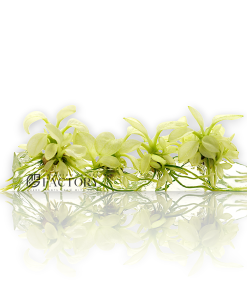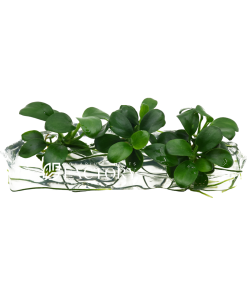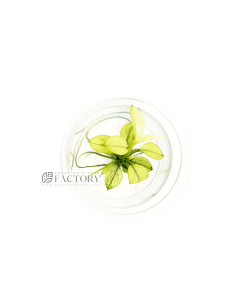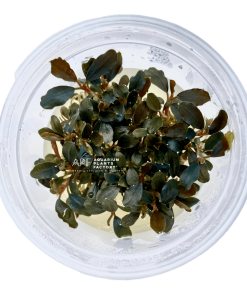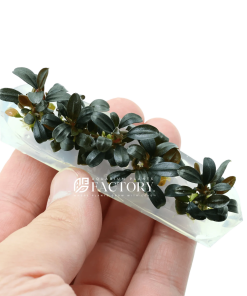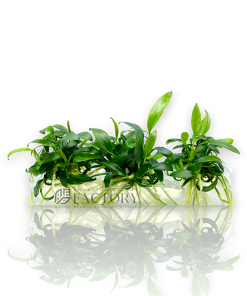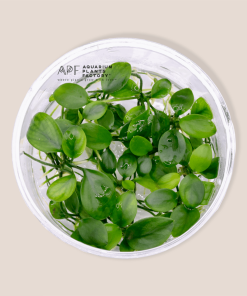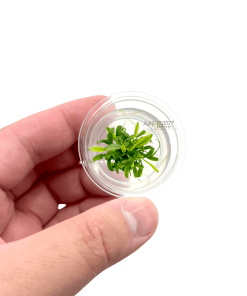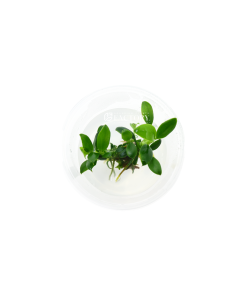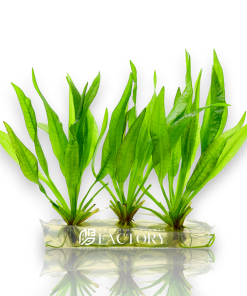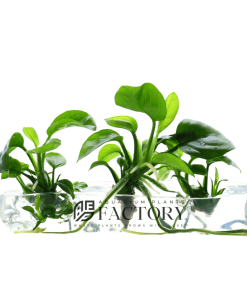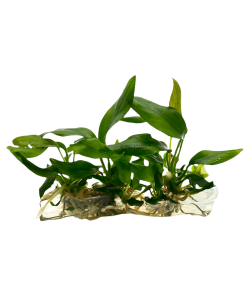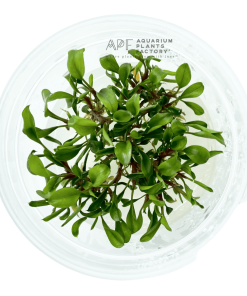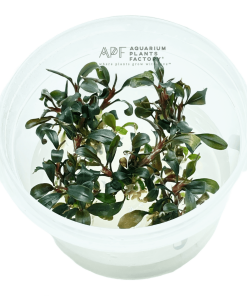Micranthemum Glomeratus (Pearl Weed) Tissue Culture Aquarium Plants Factory
$ 11,99 $ 7,19
Micranthemum Micranthemoides, also known as Baby Tears, Pearl Grass, or Pearl Weed, is a popular aquatic plant widely used in aquariums. Renowned for its delicate appearance and versatility, this plant is a favorite among aquarists looking to create lush, green landscapes in their tanks.
Key Features
- Scientific Name: Micranthemum Micranthemoides
- Common Names: Baby Tears, Pearl Grass, Pearl Weed
- Family: Linderniaceae
- Leaf Color: Bright green
- Growth Form: Compact, bushy
Unique Characteristics
Micranthemum Micranthemoides is often compared to Hemianthus Callitrichoides due to its similar appearance. However, it features larger leaves and grows taller, making it an excellent choice for various aquascaping applications. Its bright green, pointed leaves form dense clusters that can create beautiful carpeted foregrounds or lush midground areas in aquariums.
Ideal Conditions
To thrive, Micranthemum Micranthemoides requires specific conditions:
- Light: Moderate to high intensity
- CO2: Beneficial but not essential
- Substrate: Nutrient-rich substrate preferred
- Water Temperature: 22-28°C (72-82°F)
- pH Range: 5.0-7.5
Care and Maintenance
This plant is relatively easy to care for and is suitable for both beginners and experienced aquarists:
- Lighting: Ensure moderate to high light levels to promote healthy growth.
- CO2 Injection: Regular CO2 supplementation can enhance growth and overall health.
- Trimming: Regular trimming helps maintain its compact form and encourages bushier growth.
- Fertilization: Occasional fertilization supports vibrant growth and health.
Aquascaping Uses
Micranthemum Micranthemoides is highly versatile and can be used in various ways:
- Foreground Plant: Ideal for creating a dense, green carpet in the foreground.
- Midground Plant: Adds depth and texture to the midground area of your aquarium.
- Accent Plant: Can be used as a focal point in aquascapes.
Its bright green leaves provide excellent contrast and visual interest, making it a great choice for both Dutch and Nature-style aquascapes.
Comparison with Micranthemum Umbrosum
It’s important to note that Micranthemum Micranthemoides is different from Micranthemum Umbrosum (Giant Baby Tears). While they belong to the same family, Micranthemum Umbrosum has round leaves, whereas Micranthemum Micranthemoides has pointed leaves when fully submerged and growing underwater.
Propagation
Propagation of Micranthemum Micranthemoides is simple and effective. This plant propagates through stem cuttings. Simply cut a healthy stem and replant it in the substrate, where it will develop roots and grow into a new plant.
Micranthemum Micranthemoides is a must-have for any aquarist looking to enhance their aquarium with a versatile and eye-catching plant. Its ability to form dense carpets or lush midground areas, combined with its bright green leaves, makes it a standout choice for creating a beautiful, natural underwater landscape.
- Sold as a Tissue Culture plants with vitamin liquid/gel
- Packaging May Vary! To be sent in either in vitro bag or cup
- Package size: Approx. 4 inches
- Sustainable growth aquatic plants species
- Great value! Many small plants in the package
- Tissue Culture Technology | 100% Free from Snail, Algae, Pathogen, and Bacteria plus Extended Shelf Life on all in Vitro Plants
Disclaimer: Pictures are not the actual plants you will receive, but a sample representation. Unless specific, we don’t guarantee aquatic plants will be free of pests, and pesticides, grow emerged or submerge.
|
Scientific Name |
Micranthemum micranthemoides |
|
Common Name |
Pearlweed, Pearl Grass, Baby Tears |
|
Plant Type |
Stem plants |
|
Placement |
Foreground to Background |
|
CO2 |
Recommended |
|
Growth Rates |
Fast |
|
Difficulty Level |
Intermediate |
|
Nutrient Substrate |
Required |
|
Can it grow emerged? |
Yes |
|
Lighting Requirements |
Medium – High |
Fast Shipping with Professional Packaging
Due to our longstanding partnership with UPS FedEx DHL and other leading global carriers, we can provide a range of shipping options. Our warehouse staff are highly trained and will pack the items according to our precise and exact specifications. Your products will be subjected to a thorough examination and will be safely packaged prior to being sent out. Every day, we send thousands of packages to customers from all over the world. This shows our commitment to being the largest retailer online in the world. The warehouses are located in Europe in the same way as they are in USA.
Note: Orders with more than one item will be assigned a processing date according to the item.
Before shipping Our team will conduct a thorough inspection on the products you ordered. The majority of orders are delivered within 48 hrs. The expected delivery time is 3 to 7 days.
Returns
The stock is constantly changing and cannot be fully controlled by us because of the involvement of multiple entities, including the factory as well as our warehouse. The actual stock levels can fluctuate at any point. Be aware that it is possible that your order will become unavailable even after you've placed your order.
Our policy lasts for 30 days. We are unable to return or exchange your purchase when it's been 30 days from the date of purchase.
To be returned, it must be unopened and in the same condition as when you received it in. It must also be returned in the original packaging.
Related products
Uncategorized
Uncategorized
Home & Garden > Plants > Aquatic Plants
Home & Garden > Plants > Aquatic Plants
Bucephalandra Alamanda Dark – Tissue Culture Cup Aquarium Plants Factory
Home & Garden > Plants > Aquatic Plants
Bucephalandra Brownie Ghost Tissue Culture Aquarium Plants Factory
Home & Garden > Plants > Aquatic Plants
Bucephalandra Deep Purple Tissue Culture [ Premium Full Bag / Cup ] Aquarium Plants Factory
Uncategorized
Tissue Culture Plants
Uncategorized
Tissue Culture Plants
Anubias Marble White [Small Tissue Culture Cup] Aquarium Plants Factory
Home & Garden > Plants > Aquatic Plants
Bucephalandra Black Pearl Tissue Culture Aquarium Plants Factory
Tissue Culture Plants
Anubias Minima Dragon Claw Tissue Culture Aquarium Plants Factory
Home & Garden > Plants > Aquatic Plants
Uncategorized
Home & Garden > Plants > Aquatic Plants
Anubias Round Golden Coin Tissue Culture Aquarium Plants Factory
Home & Garden > Plants > Aquatic Plants
Uncategorized
Home & Garden > Plants > Aquatic Plants
Bucephalandra Black Galaxy Tissue Culture [Premium Full Bag / Cup] Aquarium Plants Factory
Tissue Culture Plants
Bucephalandra Biblis Blue Sky – Small Tissue Culture Cup Aquarium Plants Factory
Tissue Culture Plants
Home & Garden > Plants > Aquatic Plants
Home & Garden > Plants > Aquatic Plants
Bucephalandra Brownie Violet – Tissue Culture Cup [ PREMIUM FULL CUP ] Aquarium Plants Factory
Home & Garden > Plants > Aquatic Plants
Bucephalandra Brownie Purple Tissue Culture Aquarium Plants Factory
